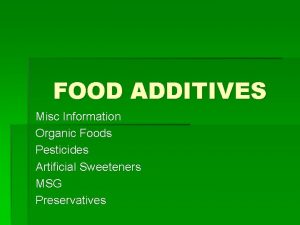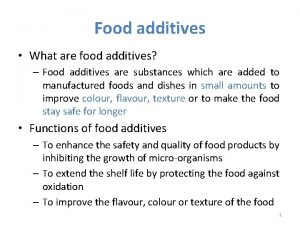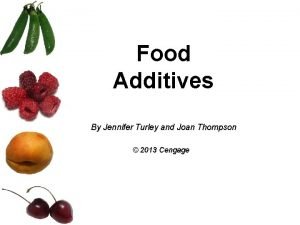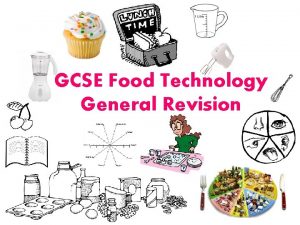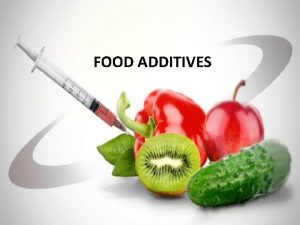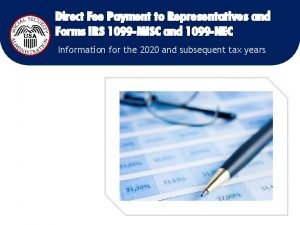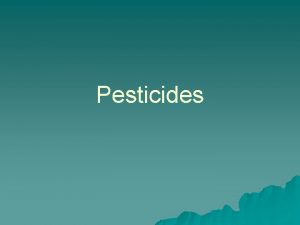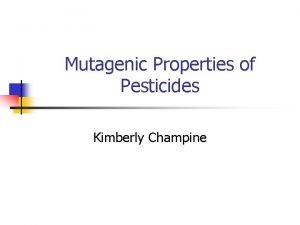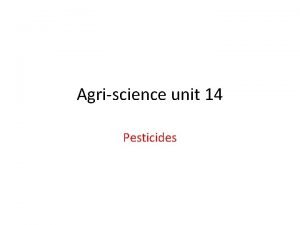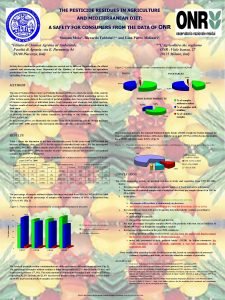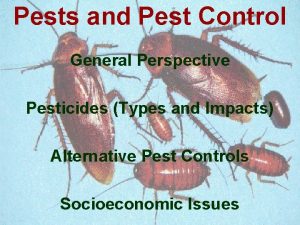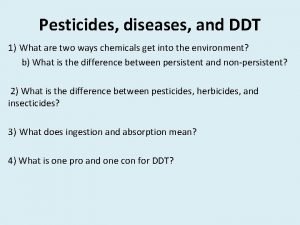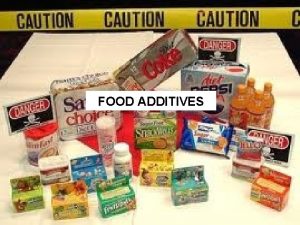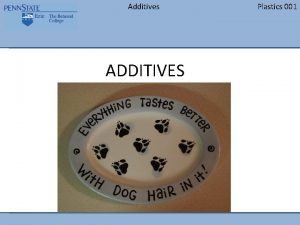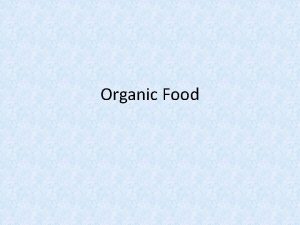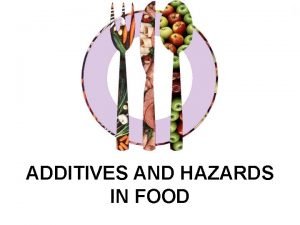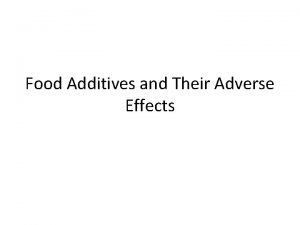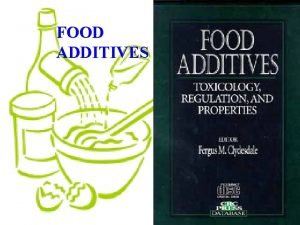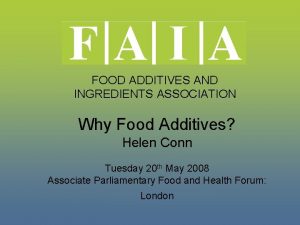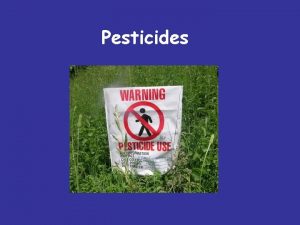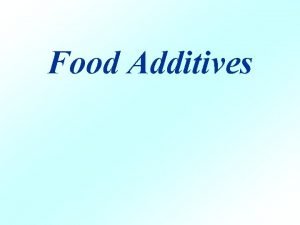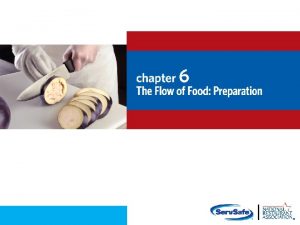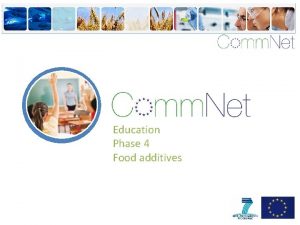FOOD ADDITIVES Misc Information Organic Foods Pesticides Artificial














- Slides: 14

FOOD ADDITIVES Misc Information Organic Foods Pesticides Artificial Sweeteners MSG Preservatives

§ Food additives used in the U. S. are strictly controlled and pose little cause for concern § Incidental food additives are not common § BHT protects fruits and vegetables from browning caused by exposure to oxygen

§ Contaminants are not intentionally used in or on foods. § GRAS stands for “generally recognized as safe” § It includes a list of food additives believed to be safe § To control the safety of additives in food the FDA has rules manufacturers must follow which include submitting proof that a new additive is safe after numerous tests.

§ The artificial fat OLESTRA passes through the digestive track undigested § It is fortified with Vitamin E

Organic Food Are foods meeting strict USDA production regulations for organic including: Not using synthetic pesticides, herbicides fertilizers, drugs and preservatives, and produced without genetic engineering or irradiation.

Organic does not mean pesticide-free, however they typically have lower levels than conventionally grown foods. § Purchasing organic fruits and vegetables rather than conventionally grown foods do not harm the environment. § Animals are raised in natural surroundings with access to outdoors.

§ Individuals that purchase organic food should: § Cook the food properly § Wash raw produce vigorously

Pesticides § Chemicals used to control insects, disease, weeds, fungi, and other animals. § To reduce your intake of pesticides residues you should: § Trim the fat from meat § Discard the outer layer of cabbage

§ Most pesticides can be removed by washing foods thoroughly.

§ Artificial sweeteners § Current evidence indicates that moderate intakes of artificial sweeteners pose no health risks. § An example of an artificial sweetener that is made from sucrose is suralose.

MSG § Monosodium Glutamate is a flavor enhancer § Is widely used in Asian restaurants § Can cause symptoms such as burning and flushing of the skin and headache

Preservatives § Examples of microbial agents are salt and sugar § Nitrites are added to foods to inhibit rancidity and preserve color § Nitrosamines have been know to cause cancer in animals § Nitrites are commonly found in hot dogs and ham

§ Vitamin C and acetic acid are good preservatives

DYES § Only 10 synthetic color additives are approved by the FDA for use in foods § Coloring agents are allowed no marginal risk
 Natural and artificial food additives
Natural and artificial food additives Msg pesticide
Msg pesticide Acetic acid examples
Acetic acid examples Examples of intentional food additives
Examples of intentional food additives Food technology revision
Food technology revision Substance added to food
Substance added to food Misc jeopardy questions
Misc jeopardy questions Misc
Misc Ssa1699
Ssa1699 The pros and cons of pesticides
The pros and cons of pesticides Classification of insecticides
Classification of insecticides Unit 14 safe use of pesticides
Unit 14 safe use of pesticides Mediterranean diet pesticides
Mediterranean diet pesticides Different types of pesticides
Different types of pesticides Example of pesticides
Example of pesticides

